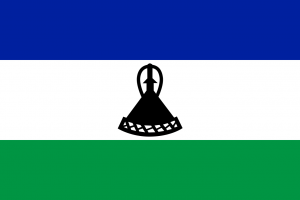Language/Southern-sotho/Culture/Traditional-Music-and-Dance
| ◀️ Traditional Clothing — Previous Lesson | Next Lesson — Modes of Transportation ▶️ |
Introduction
In Southern Sotho culture, traditional music and dance play a significant role in preserving heritage and are an essential component of cultural events. In this lesson, you will learn about Southern Sotho traditional music and dance, including their styles, instruments, and cultural significance.
Styles of Southern Sotho Music and Dance
Southern Sotho music and dance are diverse and vary by region and occasion. Here are some styles you may encounter:
Famo Music and Dance
Famo is a popular music and dance genre in Lesotho, performed during many events, including weddings, graduations, and initiation ceremonies. The music features lively drumbeats, singing, and dancing, often performed by male artists.
One popular form of Famo is "Khubetsoana," a dance that involves fast movements from side to side, accompanied by clapping and stomping.
Another popular form is "Mokhibo," a slow, soulful ballad that tells a story through singing and dancing. It often accompanies romantic occasions.
Mokgibo Music and Dance
Mokgibo is a more reserved form of dance and music, often performed by women. It is typically used for spiritual or healing purposes and is accompanied by chanting and clapping.
Mokgibo is also performed at funerals as a way of comforting the mourners and is viewed as an opportunity to connect with ancestors.
Sepoko Music and Dance
Sepoko music and dance originated as a Royal Court dance, but it now features in many celebratory events.
The dance involves a group of dancers who form a circle and move in unison while clapping and singing. Often, the lead singer will improvise lyrics, and the other dancers will follow his rhythm and movements.
Sepoko is often performed at weddings, cultural events, and public gatherings to celebrate the community's unity.
Instruments Used in Southern Sotho Music
Southern Sotho music is famous for its unique and increasingly rare instruments, including:
Khemetsi
The Khemetsi is one of the oldest wind instruments in Southern Africa, and it is made from a hollowed-out horn of an animal. The instrument produces a distinct deep sound and is often used to accompany funeral songs.
Lesiba
The Lesiba is a musical bow used for both music and communication. The bow's string produces a high-pitched sound, and the musician plucks the bow's strings with his mouth while adjusting his lips and the bow's tension to produce various pitches.
In Southern Sotho culture, the Lesiba is viewed as a spiritual instrument and is often played during important events, including weddings, funerals, and rainmaking ceremonies.
Moropa
The Moropa is a drum-like instrument made from a hollow log and animal skin. The drum produces a loud, warm sound and is often used to keep the beat during traditional dances.
Cultural Significance of Southern Sotho Music and Dance
In Southern Sotho culture, music and dance play an essential role in preserving cultural heritage and creating a sense of community. Events, including weddings, funerals, and cultural celebrations, often feature musical performances that reflect the region's history and traditions.
Moreover, music and dance have been used to bridge gaps in Southern Sotho society. They have been used to foster peace between tribes, overcome conflicts, and enhance cultural appreciation and understanding.
Conclusion
Southern Sotho traditional music and dance represent a rich and vital cultural heritage that is essential to the community's identity. Through the generations, the music and dance have been passed down, with each new generation adding their unique styles and creative expressions while preserving the art form's core identity.
Learning about Southern Sotho music and dance contributes to understanding the cultural background and identity of Southern Sotho people, bringing learners closer to the community and promoting cultural exchange.
Other Lessons
| ◀️ Traditional Clothing — Previous Lesson | Next Lesson — Modes of Transportation ▶️ |

